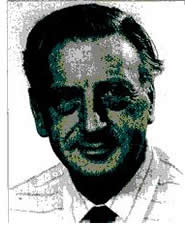About
In Memoriam: Hans Adolf Buchdahl,
Jan 07, 2010
OSA remembers Hans Adolf Buchdahl, 1919–2010
 Hans Adolf Buchdahl, an OSA Fellow Emeritus and a professor of theoretical physics at the Australian National University at Canberra, died on January 7, 2010. He was 90.
Hans Adolf Buchdahl, an OSA Fellow Emeritus and a professor of theoretical physics at the Australian National University at Canberra, died on January 7, 2010. He was 90.
Buchdahl was born in Mainz, Germany. He studied at the Royal College of Science London, later absorbed into Imperial College, completing a bachelor of science and receiving the Associate of the Royal College of Science from Imperial College
When World War II began, Buchdahl was one of 2,500 German, Austrian and Italian nationals transported to Australia on the infamous ship Dunera. Conditions on the ship, which had a maximum capacity of 1,500 including crew, were appalling due to over–crowding, ill–treatment by guards, and constant risk of enemy attack. After a 57–day voyage, Buchdahl was detained with other internees at various camps in rural towns in New South Wales and Victoria. The refugees, dubbed The Dunera Boys, developed a rich cultural and intellectual program at their camps, giving concerts and establishing an unofficial university. Many later went on to distinguished careers in the arts and sciences in Australia.
Buchdahl’s talents were noticed by members of a government optical munitions panel. In 1941, he was released under a guarantor and transferred to the University of Tasmania to assist with optical munitions work. He was awarded the DSc by the Universities of Tasmania (1949) and London (1956).
His interest in the theory of geometrical optics began at this time, initiated by his wartime work at the Waterworth Hobart Annexe, where he worked out formulae for optical aberrations taken to high orders that the Waterworth group used in designing imaging systems. These formulae were later applied worldwide, including in systems carried by satellites. At the same time, he continued research in general relativity and classical thermodynamics.
Buchdahl remained at the University of Tasmania for 20 years, rising from senior lecturer to reader. In 1962, he was named Professor of Theoretical Physics, Faculty of Science at the new School of General Studies of the Australian National University (ANU). He retired in 1984, remaining at the University as an emeritus professor, University Fellow and later Visiting Fellow.
Buchdahl was the author of five books and 160 published research papers. He was elected a Fellow of the Australian Academy of Science in 1968. His other awards and honors included the Thomas Rankin Lyle Medal (1972); the Walter Burfitt Medal from the Royal Society of New South Wales (1980); the OSA C.E.K. Mees Medal (1993); and the A.E. Conrady Award of the International Society for Optical Engineering (1997). He was a Nuffield Foundation Dominion Fellow (1951); a member of the Institute for Advanced Study at Princeton University (1959–60); Professor of Optics, University of Rochester (1967–68), and an overseas fellow of Churchill College, Cambridge, UK (1979). OSA elected him as a Fellow in 1974.
While his optical work had a profound impact in the design of optical systems, Buchdahl was also internationally recognized for his work on relativistic fluid spheres, obtaining a more physically realistic solution than that proposed earlier by Schwarzschild for the interior of a perfect fluid–spherical symmetric–non–rotating star. The literature refers to the Buchdahl fluid spheres and also to Buchdahl’s Theorem. He corresponded with Einstein on his relativistic research.
Buchdahl is survived by his wife Pamela, and two children. A third child, Catriona (Kate), died of cancer in 1992.
If you would like to make a memorial donation to the OSA Foundation in honor of Hans Buchdahl, please visit www.osa–foundation.org/give.
This obituary was contributed by the Canberra Times.
